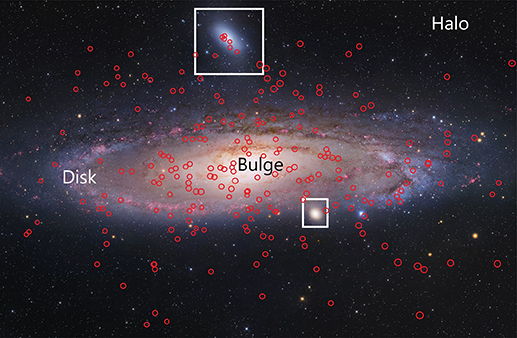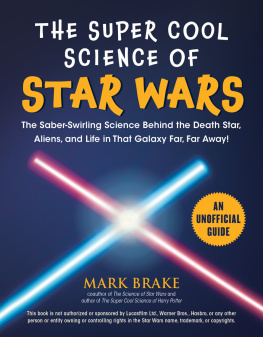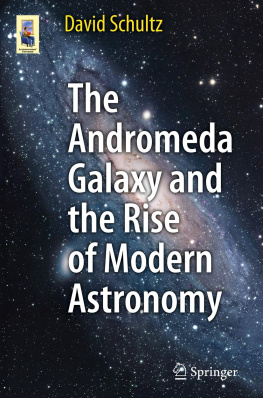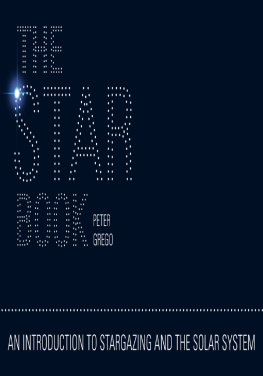Charli M Sakari - The Globular Star Clusters of the Andromeda Galaxy
Here you can read online Charli M Sakari - The Globular Star Clusters of the Andromeda Galaxy full text of the book (entire story) in english for free. Download pdf and epub, get meaning, cover and reviews about this ebook. year: 2019, publisher: Morgan & Claypool Publishers, genre: Children. Description of the work, (preface) as well as reviews are available. Best literature library LitArk.com created for fans of good reading and offers a wide selection of genres:
Romance novel
Science fiction
Adventure
Detective
Science
History
Home and family
Prose
Art
Politics
Computer
Non-fiction
Religion
Business
Children
Humor
Choose a favorite category and find really read worthwhile books. Enjoy immersion in the world of imagination, feel the emotions of the characters or learn something new for yourself, make an fascinating discovery.
- Book:The Globular Star Clusters of the Andromeda Galaxy
- Author:
- Publisher:Morgan & Claypool Publishers
- Genre:
- Year:2019
- Rating:5 / 5
- Favourites:Add to favourites
- Your mark:
- 100
- 1
- 2
- 3
- 4
- 5
The Globular Star Clusters of the Andromeda Galaxy: summary, description and annotation
We offer to read an annotation, description, summary or preface (depends on what the author of the book "The Globular Star Clusters of the Andromeda Galaxy" wrote himself). If you haven't found the necessary information about the book — write in the comments, we will try to find it.
The Globular Star Clusters of the Andromeda Galaxy — read online for free the complete book (whole text) full work
Below is the text of the book, divided by pages. System saving the place of the last page read, allows you to conveniently read the book "The Globular Star Clusters of the Andromeda Galaxy" online for free, without having to search again every time where you left off. Put a bookmark, and you can go to the page where you finished reading at any time.
Font size:
Interval:
Bookmark:

The Globular Star Clusters of the Andromeda Galaxy
Charli M Sakari
San Francisco State University, San Francisco, California, USA
Morgan & Claypool Publishers
Copyright 2019 Morgan & Claypool Publishers
All rights reserved. No part of this publication may be reproduced, stored in a retrieval system or transmitted in any form or by any means, electronic, mechanical, photocopying, recording or otherwise, without the prior permission of the publisher, or as expressly permitted by law or under terms agreed with the appropriate rights organization. Multiple copying is permitted in accordance with the terms of licences issued by the Copyright Licensing Agency, the Copyright Clearance Centre and other reproduction rights organizations.
Rights & Permissions
To obtain permission to re-use copyrighted material from Morgan & Claypool Publishers, please contact .
Multimedia content is available for this book from http://iopscience.iop.org/book/978-1-64327-750-9.
ISBN 978-1-64327-750-9 (ebook)
ISBN 978-1-64327-747-9 (print)
ISBN 978-1-64327-752-3 (myPrint)
ISBN 978-0-7503-3023-7 (PoD)
ISBN 978-1-64327-748-6 (mobi)
DOI 10.1088/2053-2571/ab39de
Version: 20191201
IOP Concise Physics
ISSN 2053-2571 (online)
ISSN 2054-7307 (print)
A Morgan & Claypool publication as part of IOP Concise Physics
Published by Morgan & Claypool Publishers, 1210 Fifth Avenue, Suite 250, San Rafael, CA, 94901, USA
IOP Publishing, Temple Circus, Temple Way, Bristol BS1 6HG, UK
To Ben.
This book presents a brief compilation of results from nearly a century of research on the globular star clusters in the Andromeda Galaxy (M31). This is not intended to be a thorough review; instead, it is intended to explore the techniques and limitations of the observations, the successes and challenges of the models, and the paradigm for the formation of M31 that has gradually emerged. These results will eventually be superseded by new data, better analysis techniques, and more complex models. However, the emphasis of this book is really on the techniques, thought processes, and connections with other studies.
This book is intended to be a review of M31 globular cluster research for a non-expert audience. I have tried to aim the book at a level for undergraduates who have taken a basic astronomy course; at times, some background knowledge is needed to fully understand various concepts. For example, I discuss stellar evolution in brief terms, but do not provide a full description of various evolutionary stages. Students who wish to gain a more thorough background in astronomy and physics before (or while) reading this text may wish to consult another source, such as an introductory astronomy textbook.
There are several particular areas that are necessarily very incomplete in this book, both due to space limitations and because I did not want to overwhelm the reader with extensive citations. As an observer, I have naturally focused on the observations of M31 clusters. I have not provided an exhaustive list of the observations of M31 GCs, particularly those surveys that occurred throughout the 1980s, 1990s, and early 2000s. I have also only discussed the field stars in M31 as a complement to the discussions of the globular clusters, although there are many other valuable results from the M31 field stars. While I have mentioned models occasionally, I have not done justice to the intricacies or challenges of modeling. Similarly, the globular clusters of the Milky Way have formed the subject of many publications, including many books; the content provided here has been selected to complement the discussions of the M31 clusters. Finally, I have chosen not to provide a complete list of references for the sake of the target reader; however, I have noted throughout the text that the references are not complete.
I have provided learning goals at the beginning of each chapter to guide the reading. I will also provide supplementary discussion questions online. It is my hope that these questions will help the reader to think critically about the application of the Scientific Method to these data.
I would like to thank several people for contributing figures or data that were used for this book, including Nelson Caldwell, Robert Gendler, Ryan Leaman, and Ricardo Schiavon. I have of course benefitted from all the excellent observations and modeling of M31 that has been done over the years, particularly the work of the Pan-Andromeda Archaeological Survey (PAndAS). I would also like to thank everyone who has made their data publicly available.
Thank you to Susanne Filler for approaching me about writing this book. I would also like to thank my post-doctoral supervisor, George Wallerstein, for his support. I also thank Velda Arnaud and Benjamin Gerard for their continuing encouragement and proofreading.
Charli M Sakari

Charli M Sakari is an Assistant Professor in the Physics and Astronomy Department at San Francisco State University. Originally from Springfield, OR, Dr Sakari attended Whitman College in Walla Walla, WA, graduating cum laude with a BA in Physics-Astronomy and Applied Mathematics, with honors in Physics-Astronomy. She then completed her PhD at the University of Victoria in Victoria, BC, Canada, where she was a Vanier Scholar. Her PhD thesis was titled Chemical Abundances of Local Group Globular Clusters. Dr Sakari then completed her post-doctoral research at the University of Washington, in Seattle. Dr Sakaris research interests include chemical abundances of stars in globular clusters and galaxy field stars, including metal-poor stars. She is also interested in stellar evolution, nucleosynthesis (the creation of the elements), and galaxy formation and evolution.
Learning goals
After completing this chapter, readers will be able to:
List some similarities and differences between the Milky Way and the Andromeda Galaxy (M31).
Explain how observations of M31 are useful for testing cosmological models of the Universe and galaxy assembly.
Compare and contrast the two general types of observations that astronomers use to study M31.
The Andromeda Galaxy, also known as Messier 31 (M31), is the closest large neighbor to our own Milky Way Galaxy. It is one of only a few galaxies that can be seen with the naked eye (i.e. without a telescope), along with the Milky Way itself and the Large and Small Magellanic Clouds. Because it is so close and bright, M31 has been observed for centuries, even before it was seen through a telescope. In the 18th century, Charles Messier listed it as the 31st object in his now famous catalog of bright, fuzzy objects [). It is now known that M31 is a gravitationally-bound group of stars known as a galaxy.

Font size:
Interval:
Bookmark:
Similar books «The Globular Star Clusters of the Andromeda Galaxy»
Look at similar books to The Globular Star Clusters of the Andromeda Galaxy. We have selected literature similar in name and meaning in the hope of providing readers with more options to find new, interesting, not yet read works.
Discussion, reviews of the book The Globular Star Clusters of the Andromeda Galaxy and just readers' own opinions. Leave your comments, write what you think about the work, its meaning or the main characters. Specify what exactly you liked and what you didn't like, and why you think so.








